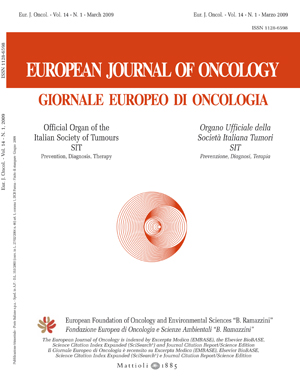Oncological guidelines: an educational, forensic or regulatory instrument?
Keywords:
oncological guide-lines, educational instrument, forensic instrument, regulatory instrumentAbstract
In the clinical practice, the oncological decision is based rather on the experience than on the analytical evaluation of prospective studies. Therefore the definition of practice guidelines, based on validity, reproducibility, representativity, clinical feasibility, with clear definition of evidence levels and recommendations strength is mandatory. Thus many scientific societies and national or international authorities have worked out clinical guidelines. They show significant differencies about the number of considered neoplastic pathologies, the adopted model, frequency of upgrade, method of distribution. The oncologists carefully pay attention to these guidelines, and they follow them if guidelines are well structured, so their behaviour is modified. In the legal context, guidelines have the value of non-mandatory recommendations, without a specific power, nevertheless they can help the judges in the interpretation of clinical controversies. Oncologists are not forced to adopt literally recommendations and guidelines in the clinical field. The decision to follow them or not is generally on individual basis and it takes into account the specific characteristics of each patient. In this context, also who hopes the employment of guidelines as indicators of the quality of medical behaviour, is in agreement with the fact that an exclusively administrative approach could generate conflicts and it does not reflect the complexity of the clinical practice. This statement has been largely approved in clinical oncology and it suggests caution concerning an exclusively regulatory approach to guidelines and recommendations.Downloads
Published
Issue
Section
License
OPEN ACCESS
All the articles of the European Journal of Oncology and Environmental Health are published with open access under the CC-BY Creative Commons attribution license (the current version is CC-BY, version 4.0 http://creativecommons.org/licenses/by/4.0/). This means that the author(s) retain copyright, but the content is free to download, distribute and adapt for commercial or non-commercial purposes, given appropriate attribution to the original article.
The articles in the previous edition of the Journal (European Journal of Oncology) are made available online with open access under the CC-BY Creative Commons attribution license (the current version is CC-BY, version 4.0 http://creativecommons.org/licenses/by/4.0/).
Upon submission, author(s) grant the Journal the license to publish their original unpublished work within one year, and the non exclusive right to display, store, copy and reuse the content. The CC-BY Creative Commons attribution license enables anyone to use the publication freely, given appropriate attribution to the author(s) and citing the Journal as the original publisher. The CC-BY Creative Commons attribution license does not apply to third-party materials that display a copyright notice to prohibit copying. Unless the third-party content is also subject to a CC-BY Creative Commons attribution license, or an equally permissive license, the author(s) must comply with any third-party copyright notices.

